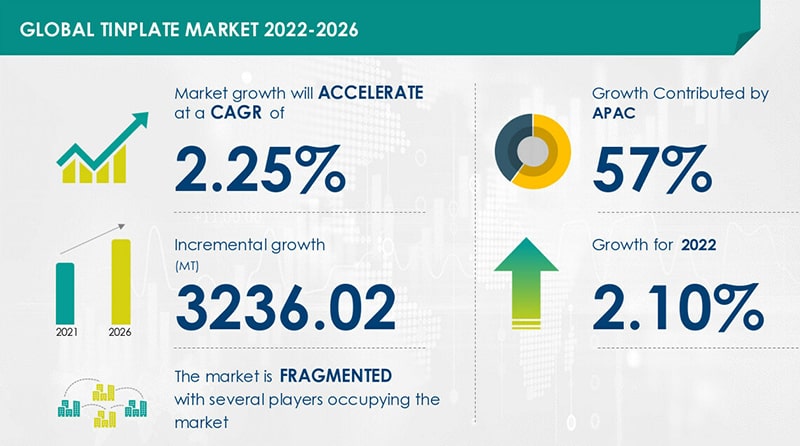
According to data from the General Administration of Customs, China exported a total of 285,000 tons of tinplate in January–February 2025, marking a year-on-year increase of 19.67%. However, behind this moderate overall growth lies a striking contrast among different export destinations. While countries such as the United States, Israel, and Mexico saw year-on-year increases of 125,267%, 2,232%, and 353% respectively, traditional markets like Italy, Spain, and South Korea experienced sharp declines of 90%, 82%, and 21%.
This divergence reflects not only global supply chain restructuring, but also the impact of geopolitical tensions and evolving trade policies. For tin box manufacturers and tin can exporters, these shifts offer both opportunities and risks. The following is a regional analysis of the key changes.
In anticipation of a proposed 25% tariff on Chinese steel set to take effect in April 2025, Chinese exporters front-loaded shipments to the U.S. during the first two months of the year. Exports surged from just 23.24 tons in early 2024 to 29,135.37 tons in the same period of 2025. Additionally, concerns over U.S. origin tracing led many exporters to shift from third-country transshipments (e.g., via Vietnam) to direct exports, further boosting figures.
The ongoing construction of five large agricultural processing plants in Tunisia, focused on olives, tuna, and tomato canning, drove a surge in tinplate demand. With three facilities already operational by February and the rest expected to come online by Q3 2025, Chinese tinplate gained traction due to its price advantage over European suppliers, who were affected by high energy costs and reduced local output.
The escalation of the Gaza conflict in late 2024 led to a significant rise in demand for emergency packaging materials and construction supplies. Tinplate imports spiked as both military and civilian sectors increased purchases, especially for canned food production. Over 60% of imports during this period were food-grade tinplate, with shipments peaking at the end of January. The China-Europe freight rail corridor enabled delivery within approximately 22 days, enhancing China’s competitiveness.

Following the inclusion of tinplate in the EU’s Carbon Border Adjustment Mechanism (CBAM) in late 2023, importers must now declare full lifecycle carbon data. China’s coal-based tinplate production results in a carbon footprint above the EU average, raising compliance costs. Coupled with a 17% decline in Spain’s canned olive exports and increased local production capacity, Chinese tinplate imports fell sharply.
Domestic steelmakers in Italy have expanded production significantly, with an estimated 600,000 tons now dedicated to food-grade tinplate annually. Local protectionist measures and partial offshoring of canned food manufacturing have led to reduced reliance on Chinese imports.
A key consumer of tinplate, South Korea saw imports from China drop by 21% in early 2025. POSCO’s advancements in hydrogen-based steelmaking boosted local tinplate capacity to 1.2 million tons annually, meeting most domestic demand. Meanwhile, the Korean F&B industry’s trend toward “lightweight packaging” shifted preference toward locally tailored materials.
If the proposed steel tariffs are officially enacted in April, exports to the U.S. could experience a steep drop—potentially falling to less than 30% of 2024 levels in the second half of the year.
Ongoing anti-dumping probes in the UK and Malaysia may be replicated by other emerging markets, threatening to narrow China’s export pathways further.
Some current orders represent front-loaded demand. Subsequent quarters may witness sharp declines in purchasing volume.
The rise of aluminum and biodegradable plastic alternatives continues to erode tinplate’s dominance in consumer packaging. Unless tinplate technology evolves toward more sustainable solutions, long-term market share loss is possible.
While China's tinplate export volume showed a positive trend in early 2025, the underlying fluctuations signal a deeper transformation in global trade dynamics. For tin box manufacturers, tin can exporters, and other players in the metal packaging industry, agility is crucial. Companies are advised to diversify markets, monitor international trade policies closely, and invest in product innovation and sustainability to maintain competitiveness in an increasingly complex global environment.